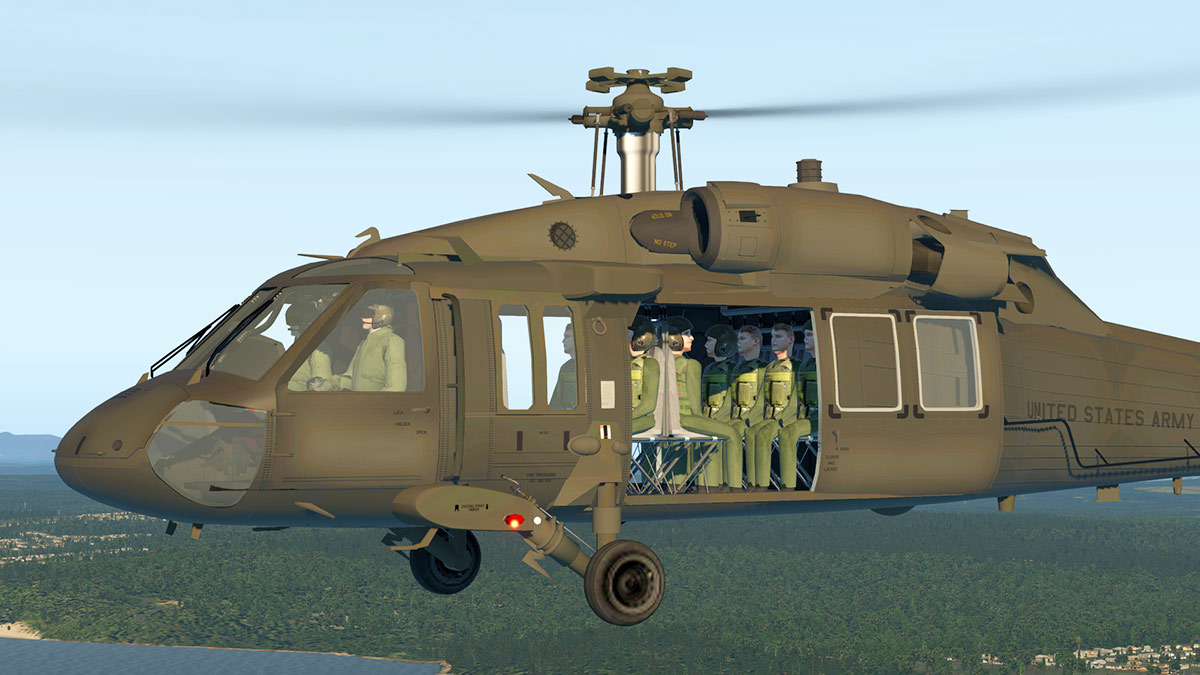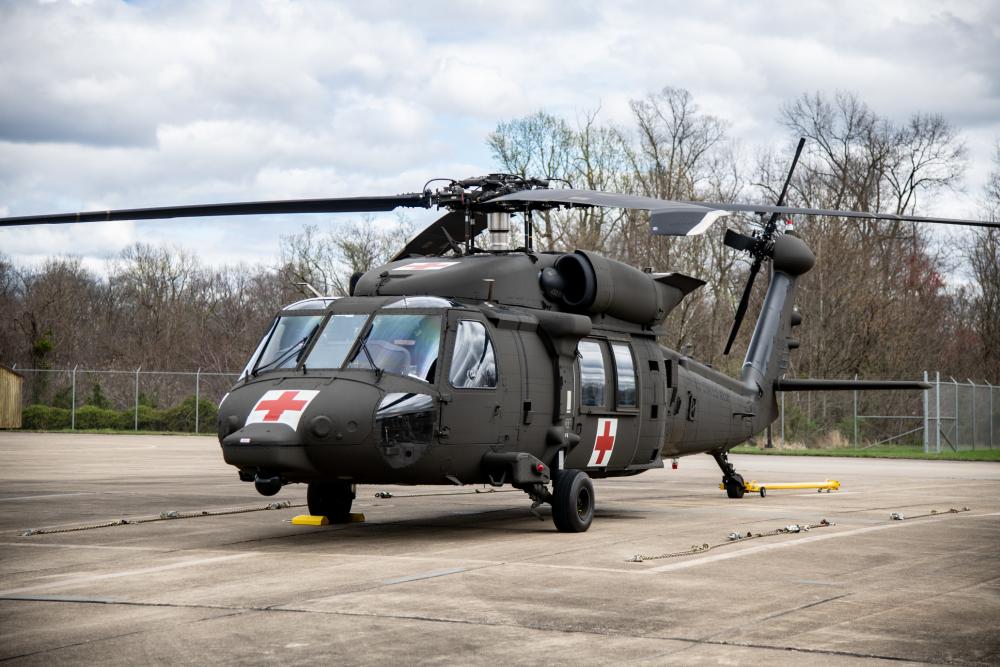UH 60 Black Hawk: Armed Forces Helicopter Functions and Capacities
UH 60 Black Hawk: Armed Forces Helicopter Functions and Capacities
Blog Article
Discovering the Ingenious Modern Technology Behind Aircraft Design and Engineering
The field of aircraft layout and design is witnessing a transformative shift driven by cutting-edge modern technologies that improve efficiency, efficiency, and sustainability. As the sector grapples with the obstacles of environmental obligation, advancements in sustainable aviation technologies promise to improve the future.
Advanced Products in Airplane Layout
Just how can the assimilation of innovative materials change aircraft design? The incorporation of sophisticated products, such as carbon fiber compounds, titanium alloys, and advanced porcelains, plays a vital function in boosting aircraft efficiency and performance. These products offer premium strength-to-weight proportions, enabling manufacturers to reduce overall aircraft weight without endangering architectural integrity. This reduction in weight straight contributes to improved gas efficiency and increased haul capacity.
Additionally, advanced products show enhanced resistance to corrosion and exhaustion, resulting in lower upkeep prices and prolonged solution life. The usage of titanium in vital parts assists stand up to severe temperatures and tensions, while carbon fiber compounds provide versatility in design and production procedures. This versatility enables more wind resistant forms, adding to premium performance features.
Additionally, the integration of smart products, which can change buildings in response to outside stimulations, opens up new avenues for adaptive systems in airplane design. uh 60. These innovations assure not just to boost safety and security and operational effectiveness however additionally to add to sustainability initiatives by lessening environmental influence through reduced exhausts. In summary, advanced materials are redefining the landscape of aircraft layout, leading the way for extra efficient, durable, and ecologically friendly aviation options
Aerodynamic Technologies for Performance
Wind resistant developments play a pivotal role in enhancing aircraft efficiency, considerably affecting fuel usage and total performance. Breakthroughs in airfoil style, such as the introduction of supercritical wings, permit optimized lift-to-drag proportions, lowering drag at transonic speeds. These innovations allow airplane to preserve higher rates with lower fuel expenditure, straight impacting functional costs and ecological sustainability.
Furthermore, the assimilation of winglets has shown reliable in reducing vortex-induced drag at the ideas of wings, better enhancing fuel efficiency - uh 60. This layout adjustment leads to a reduction in wake disturbance, adding to improved wind resistant efficiency throughout cruise problems

In addition, computational liquid dynamics (CFD) devices have actually reinvented the screening and refinement of wind resistant shapes, enabling specific simulations of air movement around airplane (uh 60). This allows engineers to introduce continuously, making certain that contemporary airplane not only fulfill governing standards but also press the boundaries of performance in air travel

Function of Computer System Simulations
Computer system simulations have come to be an essential tool in the field of aircraft style, making it possible for designers to perform detailed analyses and optimizations of various design elements. These simulations permit the online testing of aerodynamic residential properties, architectural honesty, and efficiency metrics long prior to physical models are constructed. By using computational liquid characteristics (CFD) and limited aspect i was reading this evaluation (FEA), engineers can anticipate how air flows around the aircraft and how different products will certainly reply to anxiety and stress.
Additionally, computer simulations help with the exploration of a large range of variables and scenarios, increasing the layout procedure and decreasing costs connected with physical screening. This capability not just boosts the accuracy of predictions regarding airplane habits but also supplies understandings into possible style enhancements that might not be immediately noticeable with standard techniques.

Additionally, simulations aid guarantee compliance with strict safety regulations by permitting designers to identify and fix prospective concerns early in the style stage. The combination of simulation modern technologies right into the airplane layout procedure emphasizes the significant advancements in design techniques, ultimately adding to the development of more secure, much weblink more effective, and ecologically friendly aircraft.
Expert System in Engineering
Expert system (AI) is revolutionizing the engineering landscape, specifically in airplane style, by improving decision-making procedures and optimizing layout operations. With device knowing algorithms, AI can assess large datasets, revealing patterns and insights that notify layout selections and improve overall performance.
AI applications in airplane design consist of generative layout, where algorithms develop numerous layout alternatives based upon specified parameters, allowing engineers to review a broader range of possibilities. This not only speeds up the style stage however additionally guarantees that the end products meet rigorous efficiency and safety and security requirements.
In addition, AI-driven anticipating analytics assist in upkeep organizing by assessing historical information and predicting possible failures. This positive approach minimizes downtime and enhances airplane dependability.
In addition, AI help in simulation and modeling, enabling engineers to test layouts under numerous conditions without the need for physical models. This capacity shortens advancement timelines and minimizes prices related to traditional screening approaches.
Lasting Aeronautics Technologies
Exactly how can the aviation sector efficiently balance growth and ecological duty? The answer lies in the fostering of lasting aeronautics modern technologies that prioritize performance and decrease carbon exhausts. Advancements such you can try this out as sustainable air travel fuels (SAFs), which are stemmed from renewable energies, have actually emerged as an essential component in accomplishing reduced lifecycle discharges. SAFs can dramatically reduce the carbon impact of trips, making them a feasible choice to traditional jet gas.
Furthermore, developments in aircraft design, such as the growth of lighter materials and even more aerodynamically effective forms, contribute to boosted fuel effectiveness. Electric and hybrid propulsion systems are additionally obtaining grip, providing a pathway to lower dependence on nonrenewable fuel sources and minimize greenhouse gas emissions.
The assimilation of these innovations is supported by regulatory frameworks and industry partnerships targeted at establishing ambitious sustainability targets. Digital devices like data analytics and artificial intelligence can enhance trip operations, further boosting fuel performance. By accepting lasting methods and modern technologies, the air travel industry can not just meet the growing need for air traveling however additionally play an essential function in attending to climate change, making certain a more lasting future for air transport.
Final Thought
The merging of innovative materials, aerodynamic technologies, and cutting-edge technologies marks a significant advancement in aircraft style and design. The combination of carbon fiber composites, titanium alloys, and AI-driven processes not only boosts efficiency and efficiency yet additionally simplifies operations and anticipating maintenance.

Computer simulations have ended up being an essential device in the area of airplane design, allowing designers to perform detailed analyses and optimizations of different layout facets.The convergence of advanced materials, aerodynamic advancements, and sophisticated technologies notes a significant development in airplane layout and design.
Report this page